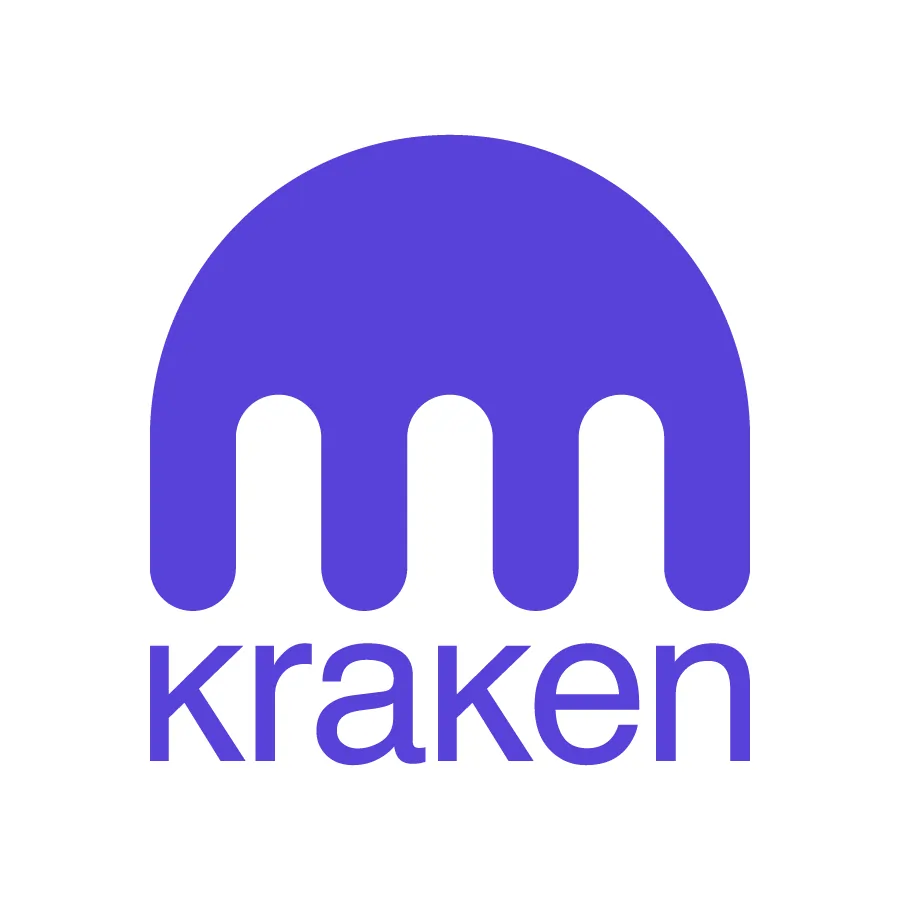Discover the best crypto staking platforms of 2024. Maximize passive income, compare yields, and explore options for various cryptocurrencies. Start earning today.
Crypto staking has quickly become one of the most popular ways to earn passive income from your digital asset holdings, but is crypto staking worth it for everyone? By locking up your crypto to support blockchain networks, you can earn rewards, often with far less complexity than mining or trading.
But with dozens of platforms offering different yields, fees, and levels of risk, choosing the right staking provider can be overwhelming.
In this guide, we’ve reviewed the best crypto staking platforms, whether you’re a beginner looking for ease of use or a seasoned investor chasing the highest APYs.
From trusted names like Coinbase and Binance to powerful DeFi solutions like Lido and Rocket Pool, you'll find everything you need to make an informed decision and start earning rewards on your crypto today.
By locking up your crypto to support blockchain networks, you can earn rewards. That’s how staking works to secure the network and generate passive income.
What Is Crypto Staking?
Crypto staking is the process of locking up your cryptocurrency to help maintain and secure a blockchain network, and in return, you earn rewards.
It’s a core feature of proof of stake (PoS) blockchains like Ethereum, Cardano, Solana, and Polkadot.
Instead of using energy-intensive mining like Bitcoin, PoS networks rely on validators who "stake" coins to confirm transactions and keep the network running smoothly.
By staking your crypto, you can either become a validator or delegate your coins to one and get paid in return.
Top Crypto Staking Platforms at a Glance
Types of Crypto Staking
There’s more than one way to stake your coins:
- Custodial staking – done through centralized exchanges like Binance or Coinbase. Staking is incredibly simple, yet it does not grant you control over the keys.
- Delegated Staking – You hold your crypto in a crypto wallet and assign it to a validator (common for coins like ADA and ATOM).
- Liquid Staking – Stake and receive a “staked token” (like stETH or rETH), which you can trade or use in DeFi.
- Solo Staking – You run your own validator node (e.g., 32 ETH required for Ethereum). While solo staking offers high rewards, it also carries a high level of responsibility.
- Staking-as-a-Service – Third-party providers handle technical setups for you, for a fee.
Each method has pros and cons; the best choice depends on your experience, risk tolerance, and whether you want flexibility or full control.
Prefer passive income without locking your assets? You might want to explore an alternative that lets you earn yield while maintaining liquidity.
The Basics of Staking
At its core, the staking process involves "locking up" a portion of your crypto holdings to support the operations of a blockchain network.
By doing so, you become a validator or delegator, helping to verify transactions and support the integrity of blockchain technology.
In return for your contribution, you receive staking rewards, often distributed as block rewards in the form of additional coins or tokens.
Proof of Stake (PoS) vs. Proof of Work (PoW) vs. Mining
Popular Cryptocurrencies for Staking
While the platforms you've listed support various cryptocurrencies, some popular options for staking include:
Each cryptocurrency may have different staking requirements, rewards, and mechanisms, which the platforms you've selected likely explain in detail.
By understanding the fundamentals of crypto staking, readers will be better equipped to evaluate the platforms you've reviewed and make informed decisions about their staking strategy.
How to Choose the Right Staking Platform
Choosing the best crypto staking platform isn't one-size-fits-all. What works for a casual investor might not suit a DeFi power user.
Here are the key factors to help you decide which platform fits your goals, comfort level, and assets:
Choose wisely; the right platform can maximise rewards, minimise risk, and make staking a whole lot smoother.
How to Start Staking Your Crypto (Step-by-Step)
Getting started with crypto staking is easier than ever—but the right steps can make all the difference in returns and security.
Here's a simple roadmap:
Staking Strategies: Tips to Maximize Your Rewards
While no strategy is one-size-fits-all, combining these techniques helps you earn more consistently while managing risk like a pro.
Frequently Asked Questions
Alternatives to Crypto Staking
While staking is a powerful tool for earning yield, it isn’t always the right fit for everyone.
Whether you're concerned about lock-up periods, platform risk, or simply want a backup plan, here are a few smart alternatives to consider:
- 🟣 Running a Validator Node
Take full control by validating transactions yourself (e.g., on Ethereum or Solana). This requires technical setup and capital (like 32 ETH) but cuts out middlemen and boosts earnings. - 🟣 Masternodes
Earn rewards for operating a masternode, a specialised full node that supports network functions. Great for coins like DASH or PIVX, though high collateral (often 1,000+ tokens) is needed. - 🟣 Restaking with EigenLayer
Re-use your staked ETH to secure additional networks. Restaking adds new income layers but comes with added smart contract risks and protocol complexity. - 🟣 Real Yield Protocols
Protocols like GMX or Synthetix share actual platform revenue with token holders. These yields are not based on inflation, making them more sustainable, but price volatility applies. - 🟣 DeFi Liquidity Providing (LPing)
Provide tokens to liquidity pools (like Uniswap or Curve) and earn trading fees plus incentives. It’s more hands-on than staking, and impermanent loss is a real factor to watch. - 🟣 Bitcoin Mining
The original crypto yield model earns you new BTC by helping run the network. It’s hardware-intensive and capital-heavy, but it offers full decentralisation with no staking mechanics.
Conclusion
Staking isn’t the only way to grow your crypto, and it doesn’t have to be your only strategy either.
Whether you're earning through DeFi tools, traditional finance, or just holding tight, the best approach is one that balances returns with your comfort level.
Smart decisions, not just high APYs, are what keep your crypto portfolio growing in a volatile market.
Crypto staking has quickly become one of the most popular ways to earn passive income from your digital asset holdings, but is crypto staking worth it for everyone? By locking up your crypto to support blockchain networks, you can earn rewards, often with far less complexity than mining or trading.
But with dozens of platforms offering different yields, fees, and levels of risk, choosing the right staking provider can be overwhelming.
In this guide, we’ve reviewed the best crypto staking platforms, whether you’re a beginner looking for ease of use or a seasoned investor chasing the highest APYs.
From trusted names like Coinbase and Binance to powerful DeFi solutions like Lido and Rocket Pool, you'll find everything you need to make an informed decision and start earning rewards on your crypto today.
By locking up your crypto to support blockchain networks, you can earn rewards. That’s how staking works to secure the network and generate passive income.
What Is Crypto Staking?
Crypto staking is the process of locking up your cryptocurrency to help maintain and secure a blockchain network, and in return, you earn rewards.
It’s a core feature of proof of stake (PoS) blockchains like Ethereum, Cardano, Solana, and Polkadot.
Instead of using energy-intensive mining like Bitcoin, PoS networks rely on validators who "stake" coins to confirm transactions and keep the network running smoothly.
By staking your crypto, you can either become a validator or delegate your coins to one and get paid in return.
Top Crypto Staking Platforms at a Glance
Types of Crypto Staking
There’s more than one way to stake your coins:
- Custodial staking – done through centralized exchanges like Binance or Coinbase. Staking is incredibly simple, yet it does not grant you control over the keys.
- Delegated Staking – You hold your crypto in a crypto wallet and assign it to a validator (common for coins like ADA and ATOM).
- Liquid Staking – Stake and receive a “staked token” (like stETH or rETH), which you can trade or use in DeFi.
- Solo Staking – You run your own validator node (e.g., 32 ETH required for Ethereum). While solo staking offers high rewards, it also carries a high level of responsibility.
- Staking-as-a-Service – Third-party providers handle technical setups for you, for a fee.
Each method has pros and cons; the best choice depends on your experience, risk tolerance, and whether you want flexibility or full control.
Prefer passive income without locking your assets? You might want to explore an alternative that lets you earn yield while maintaining liquidity.
The Basics of Staking
At its core, the staking process involves "locking up" a portion of your crypto holdings to support the operations of a blockchain network.
By doing so, you become a validator or delegator, helping to verify transactions and support the integrity of blockchain technology.
In return for your contribution, you receive staking rewards, often distributed as block rewards in the form of additional coins or tokens.
Proof of Stake (PoS) vs. Proof of Work (PoW) vs. Mining
Popular Cryptocurrencies for Staking
While the platforms you've listed support various cryptocurrencies, some popular options for staking include:
Each cryptocurrency may have different staking requirements, rewards, and mechanisms, which the platforms you've selected likely explain in detail.
By understanding the fundamentals of crypto staking, readers will be better equipped to evaluate the platforms you've reviewed and make informed decisions about their staking strategy.
How to Choose the Right Staking Platform
Choosing the best crypto staking platform isn't one-size-fits-all. What works for a casual investor might not suit a DeFi power user.
Here are the key factors to help you decide which platform fits your goals, comfort level, and assets:
Choose wisely; the right platform can maximise rewards, minimise risk, and make staking a whole lot smoother.
How to Start Staking Your Crypto (Step-by-Step)
Getting started with crypto staking is easier than ever—but the right steps can make all the difference in returns and security.
Here's a simple roadmap:
Staking Strategies: Tips to Maximize Your Rewards
While no strategy is one-size-fits-all, combining these techniques helps you earn more consistently while managing risk like a pro.
Frequently Asked Questions
Alternatives to Crypto Staking
While staking is a powerful tool for earning yield, it isn’t always the right fit for everyone.
Whether you're concerned about lock-up periods, platform risk, or simply want a backup plan, here are a few smart alternatives to consider:
- 🟣 Running a Validator Node
Take full control by validating transactions yourself (e.g., on Ethereum or Solana). This requires technical setup and capital (like 32 ETH) but cuts out middlemen and boosts earnings. - 🟣 Masternodes
Earn rewards for operating a masternode, a specialised full node that supports network functions. Great for coins like DASH or PIVX, though high collateral (often 1,000+ tokens) is needed. - 🟣 Restaking with EigenLayer
Re-use your staked ETH to secure additional networks. Restaking adds new income layers but comes with added smart contract risks and protocol complexity. - 🟣 Real Yield Protocols
Protocols like GMX or Synthetix share actual platform revenue with token holders. These yields are not based on inflation, making them more sustainable, but price volatility applies. - 🟣 DeFi Liquidity Providing (LPing)
Provide tokens to liquidity pools (like Uniswap or Curve) and earn trading fees plus incentives. It’s more hands-on than staking, and impermanent loss is a real factor to watch. - 🟣 Bitcoin Mining
The original crypto yield model earns you new BTC by helping run the network. It’s hardware-intensive and capital-heavy, but it offers full decentralisation with no staking mechanics.
Conclusion
Staking isn’t the only way to grow your crypto, and it doesn’t have to be your only strategy either.
Whether you're earning through DeFi tools, traditional finance, or just holding tight, the best approach is one that balances returns with your comfort level.
Smart decisions, not just high APYs, are what keep your crypto portfolio growing in a volatile market.
Nexo has long been one of the biggest names in crypto lending, positioning itself as a “digital wealth platform” for millions of users worldwide.
Founded in 2018, it quickly rose to prominence by offering high-yield savings accounts on crypto and stablecoins, instant credit lines backed by crypto collateral, and a Mastercard-powered debit/credit card.
In 2025, Nexo is still standing where many of its competitors fell.
With over 7 million users, $11 billion+ in assets under management, and more than $1 billion paid in interest since launch, it remains one of the largest centralized finance (CeFi) platforms.
After settling regulatory issues in the United States and paying a $45 million fine in 2023, Nexo made a comeback in April 2025, relaunching its Earn and Borrow services for U.S. customers.
The big question for users today is: Does Nexo still deliver the best balance of yield, security, and usability in 2025, and is it worth the risks of using a centralized platform?
What is Nexo?
Nexo is a crypto lending and savings platform founded in 2018 by the team behind Credissimo, a European fintech group.
The company started with a simple proposition: let crypto holders borrow cash without selling their assets and earn passive income on idle holdings.
Over the years, it has evolved into an all-in-one platform for wealth management that offers:
- Crypto-backed loans with instant approval and no credit checks.
- Interest-earning accounts with flexible and fixed terms, paying up to 16% APY on stablecoins and ~6–7% on BTC and ETH.
- The Nexo Card, which allows users to spend their crypto while earning cashback.
- An in-app crypto exchange with 1,500+ trading pairs, smart routing for best prices, and up to 0.5% cashback on swaps.
- Advanced tools such as Nexo Booster (crypto leverage up to 3×) and Futures trading (up to 100×).
Nexo markets itself as a regulated, globally accessible platform that holds licenses in more than 150 jurisdictions.
Controversies and regulatory battles have followed Nexo, including a 2023 Bulgarian raid that was later dropped without charges.
The platform’s resilience through the turbulent 2022–2023 period has solidified its reputation as one of the most durable CeFi players still operating today.
Nexo’s Core Features
Crypto-backed Loans
One of Nexo’s flagship offerings is its instant crypto-backed credit lines.
Unlike traditional loans, there are no credit checks or lengthy approval processes; users simply deposit crypto as collateral and can immediately borrow fiat or stablecoins.
- Loan-to-Value (LTV): Up to ~50% for BTC, with variations for other assets (ETH, stablecoins, altcoins).
- APR Range: As low as 2.9% for Platinum loyalty members and up to 18.9% for Base-tier borrowers.
- Early Repayment Rule: Loans repaid in under 45 days are charged the maximum 18.9% APR — a safeguard to prevent abuse of low-interest terms.
- No fixed repayment schedule: users can repay whenever they choose, provided collateral value remains sufficient.
💡More recently, this makes Nexo’s borrowing product one of the most flexible in the CeFi market, appealing to long-term holders who need liquidity without selling their crypto.
Interest-Earning Accounts
Nexo’s Earn product allows users to generate passive income on crypto, stablecoins, and fiat currencies. Interest is accrued daily and paid out either in kind or in NEXO tokens (which boosts APY by up to +2%).
Here’s what rates look like right now:
Highlights:
- BTC/ETH: ~6% flexible → up to ~8% fixed, ~9–10% with NEXO Rewards.
- Stablecoins: ~12% flexible → up to 16% fixed with NEXO Rewards.
- Altcoins: ~4–9%, depending on the asset and term.
Pros and Cons
Like any platform, Nexo has clear advantages and drawbacks. The combination of high yields, flexible loans, and a polished user experience makes Nexo stand out in 2025.
However, users should also weigh the downsides, especially the reliance on NEXO tokens for the best rates and the lack of full proof-of-reserves transparency.
Nexo Card
The Nexo Card, powered by Mastercard, lets users spend crypto without selling it. It can operate in two modes:
- Credit Mode: Uses your crypto balance as collateral, allowing you to borrow while spending.
- Debit Mode: Directly spends from your balance.
Key perks
- Up to 2% cashback in crypto.
- No annual fee.
- Free ATM withdrawals up to ~€200/month, then a 2% fee.
- FX fees are up to 2%, depending on the tier.
- The card supports integration with both Apple Pay and Google Pay.
- Platinum tier is required for physical card issuance.
This makes the Nexo Card one of the few cryptocards with dual-mode flexibility, appealing both to everyday spenders and those looking to maximize rewards.
Nexo Exchange
The built-in Nexo Exchange provides access to over 1,500 trading pairs with the SmartSmart Routing System, ensuring users get the best prices from multiple liquidity providers.
Extra features include:
- Cashback on swaps (up to 0.5% depending on loyalty tier).
- Nexo Booster → allows leveraged exposure (1.5×–3×).
- Futures Trading → new in 2024, offering perpetual contracts with up to 100× leverage for advanced traders.
For many users, this makes Nexo not just a savings or lending platform, but a complete crypto hub with trading and yield opportunities integrated into a single app.
NEXO Token & Loyalty Program
The NEXO token sits at the core of the platform’s loyalty program, which directly impacts how much interest you earn and how much interest you pay on loans.
Holding NEXO tokens in your account places you into one of four loyalty tiers—Base, Silver, Gold, or Platinum.
The higher your tier, the better the perks:
- Earn more: up to +2% APY when interest is paid in NEXO.
- Borrow for less: loan APRs can drop as low as 2.9% at the Platinum level.
- Enjoy perks: free monthly withdrawals, higher cashback on swaps, and exclusive card rewards.
👉 A minimum $5,000 balance is now required to unlock the higher tiers (Gold/Platinum), meaning casual users won’t see the full benefits without committing a substantial portfolio.
How the Nexo Loyalty Program Works
Getting Started: How to Use Nexo in 2025
Both beginners and seasoned investors can easily start using Nexo due to its straightforward design.
Opening an account requires standard KYC verification, which is usually completed in just a few minutes.
Once verified, users can deposit crypto, stablecoins, or even fiat currencies via bank transfer or card.
From there, you can choose between three main actions:
- Earn → Deposit assets into an interest-earning account. Interest accrues daily and can be paid in kind or in NEXO tokens (for a +2% bonus). You also have the option to commit assets to fixed-term deposits (1 or 3 months) for higher rates. Since 2024, Nexo requires users to periodically opt in to confirm their desire to continue earning interest, which is a compliance measure introduced to meet regulatory standards.
- Borrow → Secure an instant loan by using your crypto as collateral. The platform automatically calculates your loan-to-value ratio and sets the available credit line. There are no fixed repayment schedules; you can repay anytime, provided collateral stays above the liquidation threshold.
- Spend or Trade → Use the Nexo Card for purchases or access the built-in Nexo Exchange to swap assets. The exchange uses Smart Routing to find the best price and even offers cashback on eligible trades.
In practice, this makes Nexo a one-stop crypto platform; you can earn, borrow, spend, and trade within a single account, without needing to move assets between multiple providers.
Interest Rates and Loan Terms
One of Nexo’s biggest draws has always been its competitive rates for both savers and borrowers.
Those numbers remain among the best in the CeFi industry, but they vary depending on your loyalty tier, whether you choose flexible or fixed terms, and if you opt to receive rewards in NEXO tokens.
- Earn: Flexible accounts pay daily interest that can be withdrawn anytime, while fixed-term deposits (1–3 months) offer higher rates. Opting for payouts in NEXO adds up to +2% APY on top of your base rate.
- Borrow: Credit lines are still among the lowest in the sector, starting at 2.9% APR for Platinum members, compared to up to 18.9% APR for Base-tier borrowers. Loan-to-Value (LTV) ratios vary by asset type, with BTC and ETH providing higher borrowing limits compared to more volatile altcoins.
- Repayment flexibility: There’s no fixed repayment schedule, but loans repaid in less than 45 days trigger the maximum APR (18.9%), a safeguard against gaming the system.
Here’s an overview of Nexo’s current rates:
Security and Insurance
Security remains one of Nexo’s strongest selling points.
Since its launch in 2018, the platform has not suffered a major breach or loss of client funds, a track record that sets it apart from failed competitors like Celsius and BlockFi.
Here’s how Nexo protects user crypto assets:
- Custody Partners & Insurance → Assets are primarily held in cold storage with trusted custodians such as BitGo and Ledger Vault. Together, they provide up to $375 million in insurance coverage against theft or hacking incidents. It’s important to note, however, that such coverage is not the same as FDIC insurance; if Nexo itself were to fail, funds would not be government-protected.
- User-side protections → All accounts support two-factor authentication (2FA), biometric logins on the app, and withdrawal whitelisting. Real-time notifications further reduce the risk of unauthorized access.
- Nexo previously partnered with auditors for real-time attestation of reserves, but like many CeFi platforms, it still does not provide a complete, independent audit. Critics point to the situation as a transparency gap, even though Nexo insists that its overcollateralization model ensures solvency.
- Regulatory compliance → Nexo holds licenses in over 150 jurisdictions and complies with AML/KYC standards globally. After paying a $45 million fine to U.S. regulators in 2023, Nexo successfully re-entered the market in April 2025, relaunching its Earn and Borrow products under a more favorable regulatory climate.
Bottom line: Nexo scores highly on technical security and risk management. Users' primary concern is not hacking; instead, it is the centralized trust model, since Nexo's solvency and transparency ultimately determine the safety of their assets.
User Experience
Nexo has consistently earned praise for its clean user interface and ease of use.
Even complex financial products, such as crypto-backed loans or fixed-term deposits, feel accessible to everyday users thanks to the design of the web platform and mobile app.
We design the web platform and mobile app to make even complex financial products, such as crypto-backed loans or fixed-term deposits, feel accessible to everyday users.
Highlights
- Fast onboarding → Account setup and KYC verification typically take just a few minutes, meaning you can start earning or borrowing almost immediately.
- Smooth navigation → The dashboard clearly separates your balances, interest accounts, and credit lines, making it simple to track how your crypto assets are working for you.
- Mobile-first experience → The Nexo app is highly rated on both iOS and Android. Recent updates introduced futures trading and AI-powered market insights, expanding its appeal beyond passive income to more active traders.
- 24/7 customer support → Users can reach support via live chat or ticketing. Reviews are generally positive, though some report occasional delays during peak traffic.
💡 Whether you’re depositing stablecoins to earn yield, spending with the Nexo Card, or managing a loan, the overall experience remains intuitive and polished, especially compared to competitors that offer fewer services in one place.
Regulatory Considerations
Nexo has always marketed itself as a compliance-first platform, operating under licenses in more than 150 jurisdictions.
All users must complete KYC (Know Your Customer) verification, and the company enforces AML (Anti-Money Laundering) standards across its services.
Still, regulation has been one of the greatest challenges in Nexo’s history:
- U.S. Exit and Comeback → In 2022, Nexo agreed to stop offering its Earn product to U.S. customers after several state regulators and the SEC alleged it was operating without proper registration. In 2023, the company paid a $45 million fine to settle the case. After nearly two years away, Nexo made a comeback in April 2025, relaunching its Earn and Borrow products for U.S. customers under a more favorable regulatory climate.
- Bulgarian Investigation → In early 2023, Nexo’s offices in Bulgaria were raided amid allegations of money laundering and sanction violations. No charges were ultimately filed, and Nexo is now pursuing legal action against the Bulgarian government for reputational damages.
- EU and UK Landscape → While Nexo continues to serve users in the EU and UK, certain products (like Earn accounts or fixed-term savings) have seen restrictions due to evolving regulations. Availability may differ depending on the country.
Bottom line: Nexo has survived intense regulatory scrutiny and continues to expand globally. The U.S. return is a major milestone, but users should remain aware that product availability and terms can still vary by region.
Fees and Charges
Nexo markets itself as a low-fee platform, and often, that’s true; there are no deposit or account maintenance fees, and loan origination is free.
However, like most CeFi providers, there are spreads on trades, withdrawal limits based on loyalty tier, and extra charges on card usage that users should be aware of.
Nexo Alternatives
While Nexo is a comprehensive crypto platform, it’s not the only option. Depending on your location and goals, you may find certain competitors better suited to your needs. Below are some strong alternatives available in 2025:
How Nexo Compares to Others
Who is Nexo Best For?
Nexo’s wide range of services means it appeals to several types of crypto users.
Here’s who benefits the most from using the platform:
- Long-term holders (HODLers): If you hold BTC, ETH, or stablecoins and don’t plan to sell anytime soon, Nexo’s earn accounts let you generate passive income while keeping your assets intact.
- Users needing liquidity without selling crypto: With instant crypto-backed loans, you can access cash while avoiding taxable events or giving up potential long-term gains.
- Crypto spenders: The Nexo Card makes it easy to spend crypto in everyday life while earning up to 2% cashback.
- NEXO token holders: Those willing to allocate at least 5–10% of their portfolio to NEXO (and meet the $5,000 minimum balance requirement) unlock the platform’s best rates and perks.
- U.S. customers: With Nexo’s return to the U.S. market, Americans once again have access to its Earn and Borrow services, making it a competitive option compared to Coinbase or Crypto.com.
On the other hand, Nexo may not be ideal for:
- Beginners who find the loyalty system confusing.
- Users residing in regions with service restrictions (some EU/UK variations) may find Nexo unsuitable.
- Decentralization purists prefer self-custody or full transparency via DeFi platforms.
Future Developments
Nexo has consistently evolved its platform since launching in 2018, and 2025 is no exception.
The company has signaled several areas of expansion and improvement aimed at strengthening its position as a global digital wealth platform.
- Expanded Asset Support: Nexo continues to add new cryptocurrencies and stablecoins, giving users more options to earn, borrow, and trade.
- Enhanced Nexo Card Features: Expect further upgrades to the Nexo Card, including higher cashback tiers, wider country availability, and better integration with digital wallets like Apple Pay and Google Pay.
- AI-Powered Tools: The recently introduced AI insights inside the app are expected to become more advanced, offering portfolio optimization tips and market trend analysis to help users make better decisions.
- DeFi Integrations: Nexo has hinted at exploring DeFi protocol integrations, potentially blending centralized convenience with decentralized yields—a move that could appeal to users seeking higher returns.
- Institutional Expansion: Through services like Nexo Prime, the company is positioning itself as a partner for professional traders, funds, and institutions seeking liquidity and secure custody solutions.
- Regulatory Expansion: Having successfully re-entered the U.S. in April 2025, Nexo is pursuing additional licenses globally to ensure wider product availability and compliance in key markets, like the UK and Asia.
Ultimately, Nexo's roadmap prioritizes innovation and compliance, guaranteeing users not only additional features but also greater confidence in the platform's longevity.
Frequently Asked Questions
The Bottom Line
Nexo has proven its resilience in a sector where many competitors collapsed. With over 7 million users, strong security partnerships, and a newly re-established presence in the U.S., the platform continues to stand out as one of the most comprehensive CeFi solutions available. Its combination of high-yield savings, instant loans, and a versatile crypto card makes it attractive to long-term holders and everyday spenders alike.
That said, Nexo isn’t risk-free. The reliance on NEXO tokens for the best rates, the $5,000 minimum balance requirement, and the lack of a full proof-of-reserves audit remain important considerations. For those comfortable with a centralized model, however, Nexo will remain a compelling choice today and in the foreseeable future.
Despite the shake-ups of 2022, when platforms like Celsius and BlockFi collapsed, crypto lending has bounced back stronger, smarter, and safer. Today’s best crypto lending platforms are transparent, regulated, and built for long-term sustainability.
In this guide, we’ll break down the top-performing platforms in 2025. These were selected based on real APYs, safety, supported assets, usability, and innovation.
Whether you're looking to earn passive income on stablecoins or leverage your Bitcoin without selling, this guide focuses only on trusted, battle-tested options that are operating legally and responsibly today.
Disclaimer: Crypto lending carries risk. This is not financial advice. Always do your research and never invest more than you can afford to lose.
Best Crypto Lending Platforms at a Glance
What Are Crypto Lending Platforms?
Crypto lending platforms let you either earn interest on your crypto or borrow cash using your crypto as collateral. Instead of leaving Bitcoin or stablecoins idle, you can put them to work and earn returns that often beat traditional banks.
There are two main use cases:
- Lenders deposit crypto and earn passive income (APYs vary by asset).
- Borrowers use crypto to secure instant loans, often without credit checks.
Most people use these platforms to earn yield, access liquidity without selling, or avoid triggering capital gains taxes.
Crypto lending comes in three forms:
- CeFi (e.g., Nexo, YouHodler): centralised, easy to use
- DeFi (e.g., Syrup/Maple): decentralised, on-chain
- Hybrid: combines both models
How Crypto Lending Works (Step-by-Step)
At its core, crypto lending is simple: deposit your crypto and earn interest, or use it as collateral to borrow funds without selling.
For Lenders (Earning Interest)
- Users deposit their cryptocurrencies into the platform.
- The platform lends these assets to borrowers.
- Lenders earn interest on their deposited assets, often at rates higher than traditional savings accounts.
- Interest is typically paid out in the same cryptocurrency that was deposited.
For Borrowers (Taking Loans)
- Users can borrow cryptocurrencies or fiat money by using their existing crypto assets as collateral.
- The loan-to-value (LTV) ratio determines how much can be borrowed based on the collateral's value.
- Borrowers pay interest on the loan, which can be in crypto or fiat, depending on the platform.
Some key terms worth knowing:
- APY is your annual percentage yield - the interest you earn over a year.
- LTV tells you how much you can borrow based on your collateral.
- Most platforms use overcollateralisation (e.g., you deposit $10,000 in cryptocurrency to borrow $5,000).
- A margin call happens when your collateral drops in value and you need to top it up.
Interest structures vary by platform - some offer flexible, withdraw-anytime accounts, while others offer higher rates if you lock your funds for 30 days or more.
Key Factors to Consider Before Choosing a Platform
Before signing up for any crypto lending service, it’s worth taking a few minutes to understand what really matters. In an industry where returns are high but risks are real, it is crucial to conduct thorough research before choosing a platform.
Some platforms focus on high APYs, while others prioritise safety, transparency, or flexibility. Below is a breakdown of the most important factors to look at when comparing crypto lending platforms.
If you're not sure where to start, ask yourself these five questions:
- Is the platform regulated and secure?
- Are the interest rates realistic and sustainable?
- What assets can I lend or use as collateral?
- Are my funds locked, and for how long?
- What’s the platform’s reputation and track record?
Keeping these in mind will help you avoid common pitfalls and choose the right platform for your risk level and goals.
Types of Crypto Loans
CeFi vs. DeFi Loans
Crypto loans generally fall into two categories:
- CeFi Loans (centralised finance)
Offered by platforms like Nexo or Ledn. You deposit crypto as collateral, and the platform manages your funds. CeFi lenders usually offer a simpler interface, customer support, and fiat loan options — but they take custody of your assets. - DeFi Loans (decentralised finance)
These are issued through protocols like Aave or Compound using smart contracts. You remain in control of your keys, and loans are typically paid in stablecoins. DeFi loans are more transparent but can be complex and risky for beginners.
Loan Types by Use Case
Within CeFi and DeFi ecosystems, you'll encounter different loan models:
- Collateralised Loans – borrow against your crypto. Both CeFi and DeFi commonly offer these loan models.
- Uncollateralised (Flash) Loans – Instant loans used in DeFi trading; high-risk and short-term.
- Margin/Leverage Loans – Used to amplify trades, mostly for advanced users.
- Buy Now, Pay Later (BNPL) – Short-term loans tied to crypto cards/purchases.
- Institutional Loans – Structured loans for companies and high-volume borrowers.
Risks to Watch Out For
Before locking your crypto into a lending platform, it’s important to understand the potential risks involved.
While returns can be attractive, they come with trade-offs. Here’s what to watch for:
How Are Crypto Loans Taxed?
Crypto lending can have tax implications, even if you're just earning interest or borrowing against your assets.
Here’s a quick breakdown:
- Earning Interest: In most jurisdictions, interest earned through lending platforms is treated as ordinary income and is taxable in the year it’s received, just like earning interest from a bank.
- Collateralised Loans: Borrowing crypto using your assets as collateral typically does not trigger a taxable event since you’re not selling. But beware: if the lender liquidates your assets (e.g., because of falling collateral value), that liquidation may be taxable.
- Platform Rewards or Tokens: Many platforms offer extra rewards in native tokens (like NEXO or WXT). These are usually taxable at the time of receipt, based on their fair market value.
- Location Matters: Tax treatment varies by country. The IRS in the U.S., for example, treats crypto as property, but other countries may apply different standards.
Top Crypto Landing Platforms Compared
Now that we’ve walked through the key features of each platform, it’s time to see how they actually stack up side by side.
While some platforms excel in daily payouts and loyalty rewards, others shine with institutional strategies or multi-asset support. The comparison below outlines the core differences to help you make a more informed decision, whether you're focused on returns, asset variety, or platform type.
Crypto Lending Interest Rate Comparison
If you're seeking the highest yields on your cryptocurrency investments, this page is a place where the numbers clearly demonstrate their worth. Below is a real-time snapshot of interest rates across top lending platforms, covering BTC, ETH, stablecoins, and more, along with key factors like lockup terms and minimum deposit requirements.
Whether you're a passive holder or an active yield chaser, this table helps you decide where your crypto can work the hardest in 2025.
Tips Before You Choose
- Rates change often. Check directly with the platform before committing.
- Stable APY does not mean that it is always stable; some fluctuate while others remain fixed.
- Read the fine print. Lockup periods, payout frequency, and platform reputation matter.
How to Maximise Your Yield Safely
Getting the most out of crypto lending isn't just about chasing the highest APY - it's about smart, informed strategy.
Here's how to make your money work harder without taking unnecessary risks:
Frequently Asked Questions
Beyond Crypto Lending: What Are Your Alternatives?
Crypto lending can be a great way to earn passive income, but it's not the only option and may not suit everyone. If you’re unsure about locking up your assets or dealing with platform risks, here are a few alternative routes to consider:
- 🟣 Staking
Lock your crypto to help validate a blockchain network and earn rewards. Platforms like Ethereum, Cardano, and Solana offer staking yields, often with fewer moving parts than lending. - 🟣 Yield Aggregators
Use DeFi tools like Yearn or Beefy to automatically find the best returns across protocols. This offers passive yield but still comes with smart contract risk. - 🟣 Crypto Savings Accounts
Some wallets and exchanges (like Coinbase or Binance Earn) offer low-risk interest accounts without full-fledged lending features. These are beginner-friendly and often have flexible withdrawals. - 🟣 TradFi Options
Don’t forget traditional high-yield savings, CDs, or treasury bonds. While not as flashy as crypto, they provide consistent returns with fewer risks – a smart hedge in any portfolio. - 🟣 Long-Term Holding (HODLing)
Sometimes, the best “yield” is simply holding quality assets through market cycles. If you believe in the long-term value of crypto, letting it appreciate untouched can outperform short-term strategies.
Investing in cryptocurrencies comes with significant risk. You could lose all the money you invest. Please read our risk warning here.
The crypto lending sector has seen so much growth over the last few years. Why has it experienced this rise? What guardrails protect adopters of this emerging sector?
These questions weigh on the minds of those who want to venture into the world of crypto lending. This article provides answers.
First, let's go over the basics of crypto lending.
What is Crypto Lending?
Crypto lending is the process of putting down crypto for borrowers to access as loans. Borrowers pay interest on these crypto loans. Lenders then earn passive income from interest payments generated from deposited crypto assets.
Crypto Lending Platforms
A crypto lending platform completes the lending process. It serves as an intermediary between the lender and the borrower.
The platform lets users find out how much their crypto is worth by letting them earn interest on it. These interest rates are usually better than those that traditional institutions offer.
Crypto lending platforms make money for themselves through interest on loans and fees.
Learn more
Curious about what the best crypto lending platforms are?
How does Crypto Lending work?
Crypto lending shares similarities with traditional lending. A lending platform offers investors the means to earn interest on crypto deposits. The investor then opens a savings account with the platform to make such deposits.
The lending platform offers these deposited assets to other investors seeking crypto loans. The borrower secures this loan by providing collateral exceeding the loan amount.
The borrower also pays interest on the secured crypto loan. LTV, collateral, and interest rates are the three most important tenets of crypto lending.
Learn more
Want to take a deep dive into the world of crypto lending?
Crypto Lending Safety
Despite its popularity and high-interest rewards, safety is a real cause for concern.
Estranged crypto lending platforms like Celsius and Hodlnaut highlight these safety concerns. These lending platforms have paused operations, citing market conditions as the cause. They have also held onto the assets of their users.
This begs the question: Is crypto lending safe?
Safety in crypto lending has a lot of catching up to do when compared to the world of traditional finance. Volatility, security threats, and the lack of adequate regulations render it unsafe.
It's important to note that several crypto lending platforms are reputable and reliable. Their mode of operation offers a way around these concerns.
Investors interested in crypto lending should learn about the risks involved. They should also seek reputable platforms that mitigate these risks.
Learn more
Learn about reputable crypto lending platforms that ensure the safety of your assets.
Crypto Lending Regulation
Regulatory clarity is critical for any financial services industry. This is also the case for crypto lending. While certain jurisdictions are becoming more clear on their crypto lending stance, others are more opaque than ever. The United States recently made it very clear that they consider crypto lending to fall under SEC regulation. Firms that intend to offer lending services in the US can do so, if they register with the SEC.
Learn more
Learn more about crypto lending regulation
Crypto Lending vs. Crypto Staking
Crypto staking is the act of putting up your crypto assets to help a blockchain network verify transactions and keep it running. This pledge earns you interest or stake rewards.
Although crypto staking and crypto lending share similarities, there is a difference between them. The major difference is what your asset is used for during lock-up.
Curious about the difference? Lending or staking crypto—which is best for you? Find out more by reading this guide.
Bottom Line
Crypto lending and lending platforms are here to stay. They have experienced rapid growth over the last 3 years, and the future remains very bright for them.
It's up to you to join the bandwagon and use them to reach your financial goals. If you choose to join, consider its safety, the platforms you want to use, and how you want to earn from it.
Disclosures
The content is only provided for informational purposes. It is not meant to be tax or financial advice, and it does not recommend any particular investment plan. Every investment has risk, including the possibility of a cash loss. Past performance does not guarantee future results.
Bitcompare does not guarantee good investment outcomes. The way a security or financial instrument did in the past does not show how it will do in the future. Before investing in options, clients should carefully assess their financial goals and risk tolerance. Due to how important tax issues are in all lending situations, a customer who is thinking about borrowing money should talk to a tax expert to find out how taxes affect the outcome of any lending strategy.
Get productivity tips delivered straight to your inbox
Choose a licensed crypto exchange that aligns with your trading style, offers suitable fees and coin options, has positive user reviews, and features an interface you find intuitive to navigate.
Are you keen to invest in cryptocurrency in 2025? While it may seem like the ship for massive profits in the crypto space has sailed, it’s still very possible to grow your wealth with the right crypto investments.
If you want to get started, you’ll first need to choose among the dozens of licensed crypto exchanges around.
While picking some of the more popular crypto exchanges is usually a reliable choice, there are other considerations you must make to ensure that your crypto journey will be smooth sailing throughout your investing journey.
From your trading style to your selection of crypto tokens to invest in, there are a few critical variables you must consider to ensure that your chosen platform has everything you need to best suit your needs.
Let’s take a look at some of the key factors to consider before you start trading crypto.
1. Pick a Licensed Crypto Exchange Platform
Before picking just any crypto exchange platform, it’s crucial to narrow your choices to platforms that have undergone and passed local regulatory compliance checks.
Partnering with a licensed crypto exchange platform minimises the risk of fraud and theft of your capital. In essence, it helps ensure that your funds are protected and that you’re trading in an established and safe market.
In Australia, the primary office in charge of crypto investment regulation is the Australian Securities and Investments Commission (ASIC) department.
The Australian Transaction Reports and Analysis Centre (AUSTRAC) also hold some responsibility in the crypto sector by minimising the proliferation of money laundering and terrorist acts with this digital token. Crypto platforms operating in Australia need to be licensed under them for counter-terrorism purposes.
With over 400 crypto exchanges registered and regulated in Australia, there’s no shortage of legitimate crypto exchange platforms you can consider entrusting your funds with in the country.
It’s in your best interest to pick among this pool of exchanges, as you’ll be taking on unnecessary additional risk if you choose an unregulated platform instead. If you need a lead, buy Bitcoin from exchanges like bitcoin.com.au, as this exchange has a solid reputation in Australia and much of the crypto world.
2. Look into The Fees and Transaction Costs
Once you’ve identified the regulated crypto platforms, the next way you can narrow down your crypto platform options is by taking a look at the fees of each transaction.
Many Australian crypto exchange platforms advertise minimal fees of about 0.1% or less, but it’s important to dig deeper and see if other fees exist. Furthermore, the type of trading you plan to undertake will also affect the cost of transactions.
Premium or VIP buyers may be offered better services when using these platforms, but the capital spent to access these products will naturally be higher than average. Furthermore, some platforms operate on a per-transaction basis, with higher crypto trades costing less and smaller, one-off deals costing users more.
Given the variance of payment models across crypto exchange platforms, it’s important to know what you’re getting into beforehand. From deposit and withdrawal charges to spreads, fees can range from 1-5% in certain cases, so it’s important to do your research to ensure you won’t face any surprise losses in your transactions.
3. Evaluate Coins and Trading Pairs
When choosing a crypto platform, it’s a good idea to know whether they offer a diverse range of coins that fit your trading style.
Some crypto markets offer thousands of coins, while others may offer just a few hundred. But don’t let the disparity in figures fool you: the exchange with the fewer tokens could be holding the coin or trading pair that fits you the best.
Another consideration to pay attention to is trading pairs. This term refers to two assets you can trade directly with one another, such as BTC/AUD, BTC/ETH, or ETH/USDT.
It’s a good idea to confirm that your chosen crypto exchange supports the trading pairs that you’re eyeing, as this can influence whether you’ll have a smooth experience with your trade or have to deal with multiple conversions.
4. Read Up On Third-Party User Reviews
Another way to gauge the reliability of a crypto exchange platform is by reading up on reviews about it.
Browse forums, blogs, and social media posts to see the user sentiment about a particular crypto exchange. Try to cast aside the marketing hype or paid promotions and cut to the important pros and cons of the exchange platform.
If there are multiple negatives about a crypto platform, then list them down. List the positives as well and match your top contenders against each other. From there, you can make an informed decision on which website you’d like to pick as your home base for fulfilling crypto transactions.
5. Consider Graph Features and Platform Interface
Another consideration to make when picking your crypto exchange is the platform interface and built-in graph features.
Some crypto exchanges are known for being beginner-friendly, such as Coinbase and Binance. You can’t go wrong with either of these options if that’s what you’re aiming for.
That said, if you’re a bit more advanced, or if you want to choose a crypto platform that doesn’t insist on putting you on guiderails, then there are some options that experienced traders can enjoy. For instance, Independent Reserve and Kraken have charting tools and technical indicators that allow you to analyse market trends in greater detail.
Everyone has different needs—and what may work for others may not work for you. As such, before making any large deposits, try to navigate a couple of your preferred crypto exchange platforms and see which one best fits your trading style.
You can determine this by seeing how easy it is to place orders for your desired crypto, track crypto investments, and tinker with more advanced trading activities like futures. By doing this, you’ll familiarise yourself with your chosen platform and have peace of mind knowing that you’ve picked the right one for your crypto investments.
We hope these tips will help you in your journey with cryptocurrency. All the best in your trading journey!
Looking for the best crypto tax software? We’ve discussed some of the best tax software, including CoinLedger, Koinly, CoinTracker, TaxBit, TokenTax, and ZenLedger.
We may receive compensation if you visit partners we recommend. Read our advertiser disclosure for more information.
Crypto taxes might be the least glamorous part of your Web3 journey, but if you’re trading, crypto-staking, flipping NFTs, or yield farming, they’re unavoidable. As crypto adoption soars and governments tighten regulations, staying on top of your tax obligations isn’t just smart; it’s essential.
In 2025, tax agencies around the world are pushing harder than ever to track crypto gains and losses. Whether you're a casual investor buying a few coins on Coinbase or a full-time degen managing dozens of wallets, the right crypto tax software can help you avoid headaches, costly mistakes, and unexpected audit letters.
We’ve tested and analyzed the best crypto tax software on the market to help you find the perfect match for your needs, so you can focus on building and trading instead of stressing over forms.
Here’s what you’ll learn in this guide:
- Which crypto tax software works best for different types of investors and traders.
- Options that support DeFi, NFTs, and cross-chain activity, not just basic spot trading.
- You’ll see which tools integrate seamlessly with platforms like TurboTax and TaxAct, making filing smoother.
- We’ll highlight which tools are strong enough for accountants and tax pros managing multiple clients.
- And finally, you'll get clarity on global tax forms and compliance if you’re filing outside the U.S.
Best Crypto Tax Software For:
- Koinly - A reliable, all-around choice for most investors and perfect for easy TurboTax integration.
- Bitcoin.Tax -Great free option if you have fewer than 20 trades and want simple, no-cost reports.
- CoinLedger - Ideal for DeFi enthusiasts who need to track staking, yield farming, and other advanced activities.
- CryptoTaxCalculator - A strong choice for NFT creators and collectors looking to simplify complex Web3 activity.
- TokenTax - Best suited for accountants and tax pros who manage multiple crypto clients.
How Crypto Taxes Work
Crypto taxes might sound intimidating, but the core idea is pretty simple: whenever you make money from crypto, the tax man usually wants a slice.
Whether you’re cashing out, trading between tokens, or earning passive rewards, those are all considered taxable events.
What triggers a taxable event?
Selling your crypto for cash is the most obvious one. But swapping one coin for another (even without touching fiat), spending crypto on goods or crypto tax services, or getting paid in crypto also count as taxable disposals.
In short, almost every movement out of your wallet could have tax consequences.
How is crypto classified around the world?
In most countries (like the U.S., U.K., and Canada), crypto is treated as property, not currency. That means you owe capital gains tax when you sell or trade.
Some places, like Portugal (so far), are more lenient on private individuals, while others (like Australia) are getting stricter every year. Always check your local rules, they’re evolving fast.
Types of taxable crypto income
It’s not just about buying and selling. You might also owe taxes on:
- Staking rewards or yield farming income - usually taxed as ordinary income at the time you receive it).
- Mining rewards, which are generally treated as business or personal income depending on your setup.
- Airdrops and token giveaways, typically taxed as income when received.
- NFT sales and royalties, which can trigger capital gains or regular income tax depending on the jurisdiction.
Understanding these basics helps you see why having the right crypto tax software isn’t just convenient, it can save you from future headaches (and potentially big fines).
Comparison - Top Choices Upfront
1. Koinly - Best Overall & for TurboTax

Koinly has cemented itself as one of the most popular crypto tax tools globally, and for good reason.
It’s designed to make tax reporting effortless whether you're a casual investor or someone deeply immersed in DeFi, NFTs, and multi-chain activities.
Koinly’s strength lies in its clean interface, wide international coverage, and deep integrations with both crypto platforms and tax software like TurboTax.
If you want a "set it and forget it" experience with minimal manual corrections, Koinly makes it surprisingly easy to stay compliant and sleep well during tax season.
Key Features
- Supports 400+ exchanges, 170+ blockchains, and 100+ wallets via API or CSV
- Comprehensive tax form generation for 20+ countries (IRS 8949, HMRC CGT, CRA Schedule 3, ATO, and more)
- Automatic error reconciliation to catch missing cost basis or duplicates
- Real-time portfolio tracking and historical performance insights
- Direct export to TurboTax, TaxAct, and other popular tax filing software
- Handles complex DeFi, NFT, staking, and margin transactions
- Clean, beginner-friendly interface with advanced filters for power users
What Could Be Better
While Koinly’s free plan is generous when it comes to syncing and previewing transactions, you can’t actually export tax forms without upgrading to a paid plan.
The pricing can climb for heavy traders, and there’s no true “unlimited” plan (the highest tier caps at around 10,000 transactions).
Also, although DeFi and NFT support is impressive, extremely niche transactions or very new protocols might still require manual tagging or adjustments.
Summary
If you want an all-in-one crypto tax and portfolio solution that "just works," Koinly is hard to beat.
Its strong integrations, broad country support, and clean, intuitive interface make it the best overall choice for most investors, and the TurboTax integration is the cherry on top for US filers.
Whether you're casually trading on Coinbase or managing dozens of DeFi wallets, Koinly feels like having a crypto CPA on standby 24/7.
2. CoinLedger - Best for DeFi Users
.avif)
CoinLedger (formerly known as CryptoTrader.Tax) has carved out a strong reputation as a go-to choice for anyone deep into DeFi, staking, or NFT trading. It’s designed to make importing and categorizing complicated crypto transactions feel almost effortless, even for users who move funds across dozens of wallets and protocols.
Its main strength? Simplicity without sacrificing detail. CoinLedger automatically syncs with major exchanges and wallets, pulls in your entire transaction history, and then sorts everything into neat, understandable reports. From staking rewards and NFT flips to obscure DeFi LP tokens, the platform is surprisingly good at making sense of it all.
Once everything is categorized, you can generate IRS-ready forms and export to TurboTax, TaxAct, and more. CoinLedger also stands out for its clear audit trail, so if you ever get questioned, you have a full breakdown of each event ready to share.
Key Features
- Automatically imports transactions from 300+ exchanges, wallets, and major DeFi protocols
- Strong NFT and DeFi support, including staking, liquidity pools, and yield farming
- Supports more than 10,000 cryptocurrencies, including niche assets like Virtuals Protocol (VIRTUAL)
- Generates IRS-ready Form 8949 and detailed gain/loss reports
- Clean, guided interface designed for both beginners and advanced users
- Full audit trail for every transaction to support audit readiness
- Direct integrations with TurboTax, TaxAct, and other popular tax software
- Multi-currency support for generating reports in your local currency
What Could Be Better
While CoinLedger is fantastic for DeFi and NFT-heavy portfolios, it doesn’t currently support certain advanced DeFi protocols (like flash loans) without manual adjustments.
The free version only allows you to preview, if you want to actually download and file reports, you’ll need to upgrade to a paid plan.
Summary
If your crypto life goes beyond simple spot trading, and you find yourself jumping into liquidity pools, yield farms, or flipping NFTs, CoinLedger makes tax reporting feel far less overwhelming.
Its straightforward design, strong DeFi focus, and thorough audit trail make it a top choice for advanced users who still want a smooth, guided experience.
3. Bitcoin.Tax - Best Free Option for <20 Trades

Bitcoin.Tax is the long-standing workhorse of crypto tax tools, simple yet powerful. It’s ideal for users with a small number of trades who want a no-frills, free solution to generate all necessary tax forms.
What sets it apart is its truly free tier: up to 20 trades per tax season with access to all standard features, including form generation and Schedule D/8949 support. You only need to upgrade if your trade volume grows.
Key Features
- Truly free tier for portfolios with up to 20 trades - no hidden features locked behind paywalls.
- Unlimited “acquiring” transactions covered, with full FIFO and specific ID costing (US, Canada, UK pooling).
- Supports over 20,000 trading pairs for accurate calculations.
- Auto-generation of IRS Form 8949 and Schedule D; export to TurboTax, TaxAct, and H&R Block (desktop editions).
- Paid tiers ($54.95–$99.95) scale by transaction volume: 1,000 trades ($54.95), 5k trades ($69.95), 10k trades ($99.95).
What Could Be Better
While Bitcoin.Tax is a great option for smaller portfolios, it’s very US-focused and doesn’t offer direct support for non-US tax forms or global reporting.
It also doesn’t handle DeFi or NFT transactions, which makes it less ideal for anyone active in those areas.
The overall interface feels more old-school and utilitarian compared to some newer, more polished tools, but if you just want straightforward numbers and IRS forms, it still does the job well.
Summary
If you're a casual trader keeping it simple, fewer than 20 trades a year, Bitcoin.Tax offers a rare value proposition: fully free, full-featured, and IRS-compliant.
It's not the flashiest, but it gets the job done reliably. Once your trading volume grows, the paid tiers are still competitive and transparent in pricing.
4. CryptoTaxCalculator - Best for NFTs & Complex DeFi

CryptoTaxCalculator (also known as CTC) is made for users who dive deep into Web3. If you’re dealing with NFT mints, royalties, yield farming, or jumping across multiple chains, it brings powerful tools that simplify complexity with impressive precision.
Its standout feature is its AI-powered smart categorization, the platform automatically groups transactions, flags spam tokens, and helps you categorize all kinds of DeFi and NFT activity. Whether it’s staking, liquidity pools, airdrops, or minting and selling NFTs, CTC handles it smoothly.
Over 600 integrations - including APIs for hundreds of exchanges, wallets, and DeFi protocols, mean you can sync in a wide range of activity without manual data entry.
The onboarding is easy, and your full history is processed fast, giving you a trustworthy audit trail ready for filing or review.
Key Features
- AI-driven auto-categorization handles NFTs, staking, DeFi swaps, and yield farming with minimal manual tagging.
- Coverage of over 600 platforms, including obscure DeFi protocols and NFT marketplaces
- Supports spam token filtering, no more false assets cluttering your reports
- Smart detection of cross-chain activity (e.g., Ethereum → Polygon swaps imported automatically).
- Templates for over 22 countries with support for localized forms, plus general compliance in 100+ jurisdictions.
- Tiered annual plans from $49 (100 transactions) to $499 (100k transactions), all with a 30-day money-back guarantee.
What Could Be Better
CryptoTaxCalculator is a powerhouse when it comes to NFTs and DeFi, but its portfolio insights aren't as deep as some others, if you're looking for granular analytics, it's functional but not flashy.
Also, although the onboarding is smooth, new users might want more guidance around the AI categorization flags and mass-edit tools.
Summary
If your crypto activity spans NFTs, yield farming, airdrops, and cross-chain DeFi, CryptoTaxCalculator makes tax season feel manageable.
Its heavy focus on auto-sorting and clean reporting helps you stay organized without endless manual clean-up, and the refund policy lets you test high-volume plans risk-free.
5. TokenTax - Best Full-Service & CPA Support

TokenTax combines powerful software with top-tier personal support, blending automated tax tooling with white-glove service.
Whether you’re dealing with complex DeFi strategies, cross-chain settlements, or simply want a CPA team backing you, TokenTax offers in-depth solutions that go beyond DIY tax tools.
Key Features
- Offers both DIY and fully-managed VIP plans, letting you choose between self-service or hands-off expert support for file-ready returns.
- Premium offerings include tax-loss harvesting dashboards and real-time tax liability previews.
- Deep coverage of DeFi, NFT, margin, futures, and cross-chain activity.
- VIP accounts include live CPA consultations, audit support, and assistance filing extensions or corrections.
- Secure integration with TurboTax Premier, plus export to general tax software and CSV for accountants.
What Could Be Better
TokenTax is excellent if you're after personalized support, but it comes at a premium price, starting around $65 and climbing well into the thousands for full-service VIP support.
Its interface is less visually modern than some competitors and requires some getting used to.
Be aware that VIP pricing doesn’t always include full-filing fees, which can add extra costs.
Summary
If you’re handling complex portfolios and want the confidence of CPA-grade support, TokenTax’s VIP plans are hard to beat.
Yes, it’s a big investment, but with personalized guidance, audit availability, and advanced reporting, it can quickly pay for itself in saved time, peace of mind, and optimized tax efficiency.
6. CoinTracker

CoinTracker stands out for users who want both crypto tax reporting and powerful portfolio management in one tool.
Trusted by over 2.5 million users, including both retail investors and professionals, it brings together robust analytics and reliable tax document generation.
Whether you’re tracking dozens of wallets, DeFi positions, or moving funds across chains, CoinTracker’s syncing capabilities keep everything centralized and accurate.
Key Features
- Integrates with 500+ exchanges, wallets, 70+ blockchains, DeFi protocols, and NFT platforms.
- Portfolio tracker includes real-time balances, historical P&L charts, performance by asset/currency, and tax-loss harvesting insights.
- Advanced cost-basis methods (FIFO/LIFO/HIFO) and detailed audit trail.
- Tax reports cover over 100 countries, with 13 country-specific report templates; supports export to TurboTax, H&R Block, and CSV for accountants .
- Free tier covers up to 200 transactions; the annual plans begin at $59, offering more transactions and priority features.
What Could Be Better
CoinTracker’s depth is powerful, but that also means it has a steeper learning curve and a somewhat cluttered interface compared to sleeker tools.
Some users have reported that syncing newer tokens like MATIC and ATOM can occasionally lag, and pinged the team about transaction recalculations.
💬 User Sentiment
Reddit user chanfest22 (CoinTracker’s co-founder) acknowledged improvements in pricing and spam-filtering after community feedback Reddit:
“We simplified all of the functionality … built a mechanism to report spam transactions … and offer a 30‑day money‑back guarantee.”
On Trustpilot, many users praise its automation and real-time portfolio insights, though some mention pricing surprises at high volumes.
Summary
CoinTracker is perfect for users who want tax tools and portfolio analytics in one platform. If you're managing multiple holdings, including DeFi or NFTs, and want deep historical insights, it shines.
Just be prepared for occasional UI complexity and keep on top of token sync issues.
7. TaxBit

TaxBit is a go-to solution for traders and institutions who prioritize IRS compliance and smooth integration with exchanges.
Their platform is built by CPAs and tax attorneys, making it easy to generate IRS 8949s, Form 1099-DA (for digital asset brokers), and network-wide cost-basis tracking.
It offers strong automation for syncing with exchanges and wallets, plus powerful tax-loss harvesting tools and built-in audit readiness.
TaxBit is trusted by large players, including PayPal and Google, and is even used by the IRS itself to support digital asset tax analysis
Key Features
- Connects to over 500 exchanges and wallets with seamless API or CSV syncing.
- Generates IRS-compliant 8949s, Form 1099-DA (for digital asset brokers), and other key forms ready for TurboTax and CPA review.
- Advanced tax-loss harvesting and real-time liability preview, even in its TaxBit Network plan.
- Backed by enterprise-grade audit tracking; trusted by PayPal, Google, and even the IRS.
- Built-in portfolio and DeFi/NFT reporting for Plus/Pro users, with auto-categorization and asset tracking.
What Could Be Better
TaxBit delivers enterprise-level compliance, but it’s not always the friendliest option for casual users. While the platform is rich with functionality, its interface can feel technical and dense.
Some users on Trustpilot report occasional data-sync issues (like missing transactions) and mention that resolving these can require back-and-forth with support, which isn’t always instant.
Summary
If compliance and IRS-readiness are your top priorities, TaxBit checks the right boxes.
It’s built for people and institutions who need reliable audit trails and up-to-date regulatory form support.
Just know that casual traders might find it more technical than they need, but for serious users, its power and depth shine through.
8. CoinTracking

CoinTracking is the Swiss-army knife of crypto tax tools, ideal for anyone dealing with hundreds or even thousands of transactions across multiple platforms.
It delivers powerful portfolio analysis and tax reporting in one platform.
Whether you're a day trader, crypto fund manager, or frequent user of DeFi protocols, CoinTracking’s deep import integrations and advanced reporting make it a top-tier choice.
It's both robust and flexible, built to handle everything from spot trades to NFTs, staking, and even futures.
Key Features
- Imports from 300+ exchanges, wallets, and chains - covering coins, tokens, NFTs, DeFi positions, mining, futures, and more.
- Free plan supports up to 200 transactions and includes all reporting features, with unlimited imports during a 7-day trial.
- Supports multiple costing methods (FIFO, LIFO, HIFO, AVCO, etc.) with full historical cost tracking and audit data.
- Exports tax-ready reports for over 100 countries - including 13 localized forms, plus flexible CSV/Excel exports for accountants.
- Portfolio tracking includes real-time balances, interactive charts, gains/losses history, and profit/loss breakdowns by coin, exchange, and timeframe.
- Offers pro-level features like backups, priority support, unlimited transaction plans, and full-service options with tax consultants.
What Could Be Better
CoinTracking is incredibly comprehensive, but it shows. The interface can feel cluttered and somewhat dated unless you're familiar with heavy-duty analytics crypto tax platforms.
Its pricing structure, while flexible, can be confusing if you're not clear on transaction limits, and the range of tiers might overwhelm casual users trying to decide what’s best for their needs.
Summary
For anyone trading at scale, juggling multiple wallets, or needing deep analytics and global tax coverage, CoinTracking is one of the most capable tools on the market.
It’s especially strong for professionals and high-volume users who benefit from both the free tier and the powerful paid options available.
9. ZenLedger

ZenLedger focuses heavily on making tax season easier for U.S. crypto investors.
It integrates with TurboTax, supports DeFi and NFT transactions, and offers strong audit reports, while also including options for tax professional assistance.
Key Features
- Strong U.S. tax form coverage (8949, Schedule D, FBAR) with easy TurboTax exports.
- Handles DeFi, staking, and NFTs; includes tax-loss harvesting and audit support options.
- Free plan for imports and previews; paid tiers unlock full tax report downloads.
- Known for good customer service but interface is slightly dated compared to newer tools.
What Could Be Better
ZenLedger’s design can feel clunky for advanced DeFi users, and its pricing tiers can become expensive for high-volume traders.
It’s excellent for U.S. compliance but less tailored to global filers.
Summary
ZenLedger is a solid choice if you're focused on U.S. taxes and want straightforward TurboTax compatibility.
While not as polished or feature-rich for global DeFi traders, it’s reliable and backed by responsive support.
10. Blockpit (Accointing)
%20crypto%20tax.avif)
Blockpit, which acquired Accointing in 2023, is built with European crypto users in mind.
It offers region-specific tax reports, pre-filled local forms, and portfolio tracking—making it an excellent choice for EU-based traders.
The platform supports a wide range of chains, exchanges, NFTs, and DeFi protocols, and features a “Crypto Tax Optimizer” to spot tax-saving opportunities.
It’s especially strong in audit-ready features and localized compliance.
Key Features
- Localized tax reports for EU countries (Austria, Germany, UK, Spain, France, and more).
- Supports 250,000+ assets, including NFTs and DeFi tokens.
- Crypto Tax Optimizer to spot tax-saving opportunities.
- Portfolio tracking with real-time performance insights.
- Integrates with 150+ exchanges, 60+ wallets, and 170+ blockchains via API or CSV.
What Could Be Better
Blockpit’s pricing can become steep, especially with high transaction volumes. Its integrations, though solid, lag behind some global competitors, and its customization options for advanced strategies are limited.
Summary
If you're based in Europe and need a tool that speaks your tax jurisdiction’s language, literally, Blockpit is a standout choice. Its focus on compliance, intuitive UI, and support make it a strong contender, especially for EU investors.
Just be aware of its costs at higher usage levels and make sure it supports all your platforms.
What to Look for in a Crypto Tax Software
- Make sure your software can handle DeFi staking, liquidity pools, yield farming, and NFTs, not just simple spot trades.
- Choose a tool that supports your local tax forms and complies with tax laws in your country, especially if you're outside the U.S.
- Look for strong exchange, wallet, and DeFi protocol integrations to save time and avoid manual data headaches.
- Prioritize software with solid privacy policies, secure data handling, and reliable audit trails to protect your sensitive financial information.
- Check pricing and transaction limits carefully to be sure it fits your trading style today - and can grow with you in the future.
Free Crypto Tax Tools & Calculators
Crypto tax software can get expensive fast, but if you only have a few transactions or just want a quick estimate, a free option might be enough.
These tools let you import transactions, preview tax liabilities, and sometimes even generate basic reports, all at no cost.
Top 5 Free Crypto Tax Softwares
- Bitcoin.Tax - Free for up to 20 trades; ideal for small portfolios in the U.S.
- Koinly (Free Tier) - Free import and preview of unlimited transactions; pay only when you download reports.
- CoinLedger (Free Preview) - Free to import and review reports before paying.
- CoinTracker (Free Tier) - Up to 25 transactions for free; good for very casual investors.
- CoinTracking (Free Tier) - Free for up to 200 transactions, includes portfolio tracking.
✅ Where a Free Option Is Enough
- You only made a handful of trades (under 20–50 transactions).
- You just need an overview of gains/losses and aren’t filing a full tax return.
- You want to test a software before committing to a paid plan.
Benefits of Using Crypto Tax Software
Using crypto tax software can make tax season a lot less stressful. Instead of wrestling with spreadsheets and manually tracking trades, you can automate the entire process - saving hours (or even days) of work.
A good crypto tax tool automatically calculates your capital gains and losses across all your wallets and exchanges. No more guessing your cost basis or hunting down old transaction records.
Many platforms also highlight tax-loss harvesting opportunities, helping you offset gains and potentially reduce your overall tax bill. This is a smart strategy to keep more of your profits in your pocket.
On top of that, crypto tax software keeps you compliant with local tax regulations. Filing accurate reports reduces the risk of penalties, audits, or unexpected tax bills later on.
At the end of the day, the best crypto tax software gives you peace of mind. You’ll know your crypto taxes are handled accurately and efficiently, so you can focus on growing your portfolio - not stressing over forms.
The Bottom Line
All great crypto tax software tools share the same core mission: to make filing your crypto taxes as easy and stress-free as possible.
They connect to your exchanges, wallets, DeFi protocols, and even NFT marketplaces, letting you import transactions automatically via API or manually with CSV files.
From there, they handle the heavy lifting - sorting your transactions, calculating gains and losses, and flagging any errors for you to review and fix.
While every tool gets the basics done, they each shine in different ways. Some focus on advanced DeFi and NFT support, others on high-volume trading, and some prioritize one-on-one CPA assistance.
Ultimately, the best crypto tax software for you depends on your trading style, the complexity of your portfolio, and how much hands-on help you want.
By breaking down each platform’s strengths and limitations, we hope this guide makes it easier to pick the right one - so you can file with confidence and get back to focusing on your crypto journey.
Frequently Asked Questions
Web3 companies can now leverage existing regulatory infrastructure through a licensing shortcut that allows them to offer cryptocurrency services without navigating the costly and time-consuming process of obtaining individual money transmitter licenses in each state.
Web3 companies seeking to operate legally across the United States face a costly regulatory maze that can consume millions of dollars and years of development time. Neil Bergquist, co-founder and CEO of Coinme, has witnessed this challenge firsthand during his company's decade-long journey to secure money transmitter licenses in 37 states.
"We would have to go to every state and say, 'Here's our business model. Here's our product. Do you regulate us?' Some states would say, 'No, because Bitcoin's not money, and we only regulate money.' Other states would say, 'We don't know. Let us get back to you," Bergquist explains. What emerged from this arduous process was an infrastructure that now serves as a regulatory shortcut for companies looking to enter the crypto space without navigating the licensing labyrinth themselves.
The Million-Dollar Licensing Problem
Cryptocurrency businesses operating in the United States must obtain money transmitter licenses (MTLs) in each state where they conduct business. According to compliance experts, obtaining these licenses across multiple states can cost between $10 million and $35 million, with individual state applications ranging from $10,000 to $500,000 in bonds alone.
Each state maintains its own regulatory framework, creating a complex patchwork of requirements. Montana remains the only state that doesn't require money transmitter licensing for cryptocurrency businesses, while others like New York impose additional BitLicense requirements.
For startups and emerging Web3 companies, these costs represent a significant barrier to entry. "To go create all that infrastructure yourself is expensive, risky, redundant, and it doesn't make sense unless you're doing billions in volume," Bergquist notes.
Coinme's Regulatory Infrastructure
Coinme's approach to solving this problem began in 2014 when Bergquist and his team worked directly with Washington State regulators to create the nation's first virtual currency money transmitter license. What started as a regulatory necessity has evolved into a comprehensive compliance infrastructure that other companies can leverage.
"We now have 37 state money transmitter licenses, and a handful of states where we operate without a license because they don't regulate our business model," Bergquist explains. The company's crypto-as-a-service (CaaS) platform allows partners to offer cryptocurrency services while operating under Coinme's existing licenses and compliance framework.
The infrastructure includes know-your-customer (KYC) compliance, anti-money laundering (AML) protocols, transaction monitoring, and the regulatory reporting required in each jurisdiction. Companies can integrate these capabilities through Coinme's API suite rather than building their own compliance systems from scratch.
Recent data from the Financial Crimes Enforcement Network shows that cryptocurrency businesses must register as Money Services Businesses (MSBs) at the federal level and maintain compliance across all operating jurisdictions. Coinme's platform handles these requirements automatically for partner companies.
Real-World Implementation
The practical benefits of this approach became evident in May 2025 when Exodus, a leading self-custody wallet provider, launched XO Pay using Coinme's infrastructure. The integration allowed Exodus to offer direct cryptocurrency purchasing within its mobile app without obtaining its own money transmitter licenses.
"By creating a Web2 checkout experience in a Web3 self-custody wallet, Exodus has set a new bar for crypto user experience," Bergquist said about the partnership.
XO Pay supports ten major cryptocurrencies and accepts payments through Visa, Mastercard, Apple Pay, and Google Pay across 48 states. The service launched within weeks rather than the years typically required for independent licensing.
The API-First Strategy
Bergquist's team designed their platform around a modular API architecture that allows companies to select specific compliance capabilities based on their business models. Gaming companies might integrate token purchase and redemption features, while financial institutions could focus on stablecoin services for cross-border payments.
"We're a platform that provides crypto infrastructure. That infrastructure includes the ability to create an account and conduct KYC so that Coinme and our partners can be compliant with various state and federal regulations," Bergquist explains.
The API-driven approach addresses a fundamental challenge in Web3 development: the technical complexity of blockchain integration combined with regulatory compliance requirements. Most companies lack the specialized expertise in both cryptography and financial regulations needed for independent implementation.
According to industry projections, international B2B blockchain transactions could exceed $1.7 billion by 2025, with much of this activity flowing through standardized API interfaces rather than custom implementations.
Time and Cost Advantages
The financial benefits of leveraging existing infrastructure become clear when compared to independent licensing timelines. A typical money transmitter license application can take 6-18 months per state, with some states requiring audited financial statements, surety bonds, and ongoing reporting requirements.
Coinme's partners can deploy cryptocurrency services within weeks of API integration. For companies that have raised $10 million or less in funding, the savings in both time and capital can determine whether their products reach the market.
"No product does billions in volume right out of the gates, so being able to leverage that infrastructure is going to inspire a lot of entrepreneurs," Bergquist observes.
Broader Industry Implications
The regulatory infrastructure developed by companies like Coinme reflects a maturing cryptocurrency industry where compliance has become a competitive advantage rather than a barrier. As federal and state regulators provide clearer guidance on digital asset businesses, companies with established licensing frameworks are positioned to capture market share from new entrants.
For Web3 companies evaluating their regulatory strategy, the choice between building independent infrastructure and partnering with licensed providers increasingly favors the latter approach. The capital and time savings allow companies to focus resources on product development and customer acquisition rather than regulatory compliance.
Bergquist's decade-long investment in regulatory infrastructure has created what amounts to a licensing highway for cryptocurrency businesses. As the Web3 ecosystem continues expanding, this infrastructure-as-a-service model may become the standard approach for companies seeking to balance innovation with compliance requirements.
Explore our ultimate guide to hiring a Portugal Golden Visa lawyer. Learn essential tips and expert advice on choosing the right legal assistance to navigate the application process.
The Portugal Golden Visa is one of the most compelling residency-by-investment programs in the world, offering non-EU nationals a legal path to EU residency, visa-free travel across the Schengen Area, and potential citizenship after five years.
But while the opportunity is attractive, the process is complex.
With Golden Visa investment thresholds starting at €250,000, ongoing changes to immigration policy, and high stakes around documentation and timing, a single error can result in application delays, fund lockups, or outright rejection.
Whether you’re considering venture capital funds, scientific research contributions, or job-creation initiatives, navigating the legal and regulatory process requires more than just good intentions; it requires expert support.
That’s why working with a qualified Portugal Golden Visa lawyer is a strategic choice. An experienced legal partner ensures your application is compliant from day one, your investment meets current legal criteria, and your entire path, from approval to renewal to citizenship, is secure and stress-free.
Key Takeaways
- 💼 Choose lawyers with a Golden Visa focus
Look for legal teams with hands-on experience in Golden Visa applications, especially under the updated 2023–2025 legislation. - 🤝 Insist on full-scope legal support
A strong legal partner doesn’t just handle the application. They support you through renewals, NIF and bank setup, and Portuguese citizenship steps later on. - 📈 Demand clarity and fixed-fee pricing
You can budget with confidence thanks to transparent service scopes, flat-rate fees, and no hidden extras. - 🌍 Prioritize firms with local legal insight
Navigating AIMA, tax offices, and banks in Portugal requires local expertise, especially with post-SEF changes now in place. - 📝 Ensure investment compliance is double-checked
Your legal partner should vet the fund, donation, or business route you choose to avoid risky or non-qualifying options.
Understanding the Portugal Golden Visa Program and Why Legal Guidance Is Essential

The Portugal Golden Visa is one of the world's most popular residency-by-investment programs, offering non-EU investors the ability to live in Portugal, travel visa-free throughout the Schengen Area, and eventually apply for permanent residency or citizenship, all without having to relocate full-time.
Introduced in 2012, the program was designed to attract foreign capital and stimulate the Portuguese economy. Today, it remains a top choice for high-net-worth individuals and families seeking both lifestyle and mobility benefits within the EU.
Although the Golden Visa's core promise appears straightforward, the process is far from it. Multiple investment options, evolving legal requirements, and a strict documentation process mean that one wrong step can delay or even derail your application.
That’s where a Portugal Golden Visa lawyer comes in.
What Exactly Is the Portugal Golden Visa Program?
The Portugal Golden Visa is a residency-by-investment program that allows non-EU nationals to obtain legal residency in Portugal in exchange for a qualifying investment. It offers a pathway to permanent residency and citizenship, along with visa-free travel throughout the Schengen Area.
To apply, you don’t need to live in Portugal full-time, but you must meet specific legal and financial requirements to qualify.
To qualify, applicants must:
Investment routes include
Portugal’s Golden Visa program offers several qualifying investment paths, each with its own legal, financial, and strategic considerations.
Whether you're looking to support national innovation, contribute to cultural preservation, or fuel job creation, your chosen route must meet strict eligibility criteria set by Portuguese law.
Each of these routes comes with unique legal requirements, compliance standards, and risks, all of which must be properly documented and structured to qualify.
⚖️ Where a Lawyer Makes the Difference
Applying for the Portugal Golden Visa isn’t just about paperwork; it’s about navigating a complex legal framework that spans immigration law, investment regulation, and long-term compliance with evolving Portuguese government policies.
A small error, like a document that isn’t properly translated or an investment that doesn't meet updated criteria, can lead to application delays, rejections, or even legal complications down the line. That’s why working with a dedicated Golden Visa lawyer is one of the smartest decisions an investor can make.
Rather than just submitting forms, your lawyer becomes a strategic legal partner, ensuring that every part of your Golden Visa journey is legally sound, efficient, and optimised for success.
An experienced Portugal Golden Visa lawyer brings the following to the table:
While it’s technically possible to apply on your own, most seasoned investors recognise that legal missteps in foreign jurisdictions are not worth the risk.
A trusted lawyer doesn’t just guide you — they protect your time, money, and long-term residency goals.
Recent Changes and Updates to the Program
In October 2023, Portugal implemented significant changes to its Golden Visa program, aiming to redirect foreign investments to sectors that promote sustainable economic growth.
One of the most notable modifications was the elimination of real estate investments as a qualifying option. This shift was part of the "Mais Habitação" (more housing) law, introduced to address housing affordability and availability concerns.
As of 2025, the current eligible investment categories for obtaining a Portugal Golden Visa include
- Venture Capital Fund Investment: A minimum investment of €500,000 in eligible venture capital or private equity funds registered with the Portuguese Securities Market Commission (CMVM), focusing on sectors such as technology, industry, or other areas of economic growth.
- Job Creation: Establishing a business that creates at least 10 full-time jobs in Portugal, directly contributing to the local economy.
- Scientific or Technological Research: A capital transfer of €500,000 or more into public or private research institutions engaged in scientific or technological research.
- Cultural or Artistic Project Donation: A minimum contribution of €250,000 towards projects aimed at preserving Portugal’s cultural heritage, such as maintaining or restoring national heritage sites.
These updates reflect Portugal's strategic effort to channel foreign investments into sectors that foster innovation, job creation, and cultural preservation, thereby ensuring long-term economic sustainability.
What a Golden Visa Lawyer Actually Does — And Why It Benefits You

A Golden Visa lawyer is more than just someone who files your application. They’re your legal strategist, compliance officer, and point of contact for every institution involved, from Portuguese fund managers to immigration authorities.
For many investors, the immigration procedure is a multi-year journey that involves large financial transfers, strict regulatory oversight, and evolving government policies.
Having a legal professional manage the process ensures your path to residency (and eventually citizenship) stays smooth, secure, and protected from disruption.
Here’s how a qualified Golden Visa lawyer supports you from start to finish:
1️⃣ Avoid Bad Investments with Legal Due Diligence
Before you commit a cent, your lawyer investigates the investment’s eligibility, structure, and regulatory status to ensure it complies with Golden Visa law. That means no risky funds, blacklisted entities, or hidden legal gaps.
2️⃣ Maximize Your Approval Odds with Legal Structuring
A lawyer builds your application to withstand scrutiny, from correct document formatting and translations to properly notarised contracts and declarations. The result reduces your rejection risk and speeds up approvals.
3️⃣ Investment Screening and Legal Due Diligence
Before committing to any qualifying investment, your lawyer reviews the structure, legal backing, and fund eligibility to ensure it aligns with the Golden Visa law. The procedure prevents costly mistakes and helps avoid blacklisted or non-compliant options.
4️⃣ Application Assembly and Legal Structuring
Your lawyer prepares, reviews, and structures your application for optimal approval potential. The process includes formatting supporting documents, ensuring correct translations and apostilles, and handling any necessary declarations or compliance statements.
5️⃣ Direct Liaison with Banks, Funds, and AIMA
Rather than dealing with Portuguese bureaucracy yourself, your lawyer acts as your representative, coordinating with financial institutions, verifying fund transfers, and handling all correspondence with AIMA (formerly SEF).
6️⃣ Handling Power of Attorney and Local Representation
Many lawyers can represent you through a legal POA, meaning you don’t have to fly to Portugal for every step. This includes attending the biometrics appointment or making urgent filings on your behalf.
7️⃣ Preventing Delays and Legal Rejections
From missing tax declarations to misaligned investment documents, seemingly minor mistakes can derail your application. A lawyer ensures every requirement is met, reducing the risk of rejection or a request for resubmission.
8️⃣ Long-Term Planning for Renewals and Citizenship
A good lawyer doesn’t just help with your initial approval. They map out your long-term legal timeline, including residence permit renewals, citizenship eligibility, and requirements for family reunification if needed.
Criteria for Choosing the Best Golden Visa Lawyer

Choosing the right legal professional for your Portugal Golden Visa application is a key part of ensuring your investment leads to a successful residency outcome. A qualified, responsive, and experienced lawyer can simplify the process, reduce risks, and provide peace of mind throughout your journey. Below are the essential factors to consider:
Experience with Golden Visa Applications: Look for lawyers with a strong track record specifically in Golden Visa cases. Experience with fund-based, donation-based, or job-creation applications ensures they understand the nuances of each route and current AIMA requirements.
Regulated and Registered: Verify the lawyer's official registration with the Portuguese Bar Association and their legal authorisation to provide immigration representation in Portugal.
Clear Fee Structure: A transparent, upfront pricing model, ideally with a flat fee or clear stage-based payments, helps you understand what’s included and avoid unexpected costs.
Comprehensive Legal Support: The ideal lawyer should offer end-to-end legal services, including:
- NIF and bank account setup
- Investment compliance checks
- Document preparation and submission
- Coordination with AIMA and fund partners
- Renewal support and future citizenship guidance
Proven Track Record: Client reviews, success rates, and referrals can help you assess credibility. Lawyers with a history of successful Golden Visa applications are more likely to anticipate and resolve potential issues efficiently.
Responsiveness and Communication: Good communication is essential, especially if you're applying remotely. Look for legal teams that offer structured updates, timely replies, and a clear communication channel.
Familiarity with Current Immigration Policies: Portuguese immigration rules have evolved significantly recently, especially around the Golden Visa. Choose a lawyer who stays informed on policy changes and adapts their approach accordingly.
Independence and Objectivity: Your lawyer should act in your best interest, not the interests of a specific fund or developer. Independent legal advice ensures you get an objective assessment of any investment opportunity.
Personalised Legal Strategy: Every client has different goals, timelines, and family structures. A good Golden Visa lawyer will take the time to understand your situation and provide tailored advice to match your priorities.
Legal Support at Every Stage of the Golden Visa Process
Working with a Portugal Golden Visa lawyer isn’t just a one-time service; it’s an ongoing legal partnership that spans years of residency milestones, document deadlines, and policy changes.
A qualified lawyer provides step-by-step guidance from the moment you consider investing all the way to obtaining Portuguese citizenship (if desired).
Here’s how legal support maps to each critical phase:
Step 1: Pre-Investment Due Diligence
Before a single euro is invested, your lawyer plays a vital role in vetting the legal and financial integrity of your chosen investment route.
- We review fund investments to ensure compliance with Portuguese Golden Visa regulations, such as minimum capital, Portuguese-based operations, and 60% domestic allocation.
- Current law assesses donation and cultural projects for government accreditation and qualification.
- Your lawyer checks contractual risk, ensures all financial documents are aligned with immigration standards, and confirms there are no legal barriers to eligibility (e.g., dual nationality conflicts, criminal record complexities).
This early-stage legal work reduces the risk of wasted investments, rejected applications, or worse, future ineligibility for residency.
Step 2: Structuring the Application for Approval
Once your investment path is confirmed, your lawyer will prepare and structure the entire application file, which includes:
- Collecting and verifying documents (translated, notarized, and apostilled where needed)
- Drafting power of attorney forms (if you need remote legal representation in Portugal)
- Coordinating your NIF (tax number), bank account setup, and investment confirmation
- Ensuring every element aligns with AIMA submission standards and Golden Visa legal requirements
Their legal team will review for completeness and cross-reference all details before submission so that your file is not just complete but strategically built for success.
Step 3: SEF/AIMA Navigation and Legal Representation
With Portugal’s immigration authority transitioning from SEF to AIMA, the process has introduced new layers of bureaucracy and timing variables. Your lawyer becomes your point person for:
- Scheduling and confirming your biometrics appointment at the correct AIMA office
- Representing you locally if you are abroad (via power of attorney)
- Following up with AIMA to prevent unnecessary delays or missed communications
- Responding to government queries and requests for clarification
This step is where many DIY applicants lose time, but with legal guidance, you stay on track, compliant, and fully informed at all times.
Step 4: Residence Card Renewals & Citizenship Applications
A key benefit of the Golden Visa is the path to permanent residency and citizenship after five years, but that journey includes multiple milestones that require legal oversight.
- Renewal of your residence permit at year 2 and year 4 (including updated documentation and proof of investment maintenance)
- Compliance checks to confirm your physical presence in Portugal meets the minimum stay requirements (14 days over 2 years)
- Legal strategy to transition from temporary residence to permanent residency or directly to citizenship
- Preparation for language tests, documentation updates, and proof of legal residence
A lawyer ensures each renewal is properly submitted and that you’re eligible for the next step without gaps or surprises.
Why It Matters
Golden Visa law is not static. Requirements change, processing times shift, and even well-prepared applicants can run into procedural hurdles.
A dedicated lawyer team will guide you through each legal checkpoint, making a significant difference throughout the application process and ensuring it proceeds smoothly.
Golden Visa Pitfalls Only Lawyers Know How to Avoid

Applying for a Portuguese Golden Visa might seem straightforward on paper, but in practice, the process is filled with legal grey areas, hidden technicalities, and evolving requirements that aren’t always reflected on official government websites.
Without expert legal guidance, applicants can unknowingly make costly mistakes that result in delays, rejections, or even loss of eligibility. Here's how experienced Golden Visa lawyers prevent those outcomes.
⚠️ Hidden Legal Loopholes That Sink DIY Applications
Many rejections don’t happen because of major infractions; they’re triggered by seemingly small oversights that legal professionals are trained to catch. Common examples include:
📜 The Lawyer’s Advantage
Most rejected Golden Visa applications could have been approved if they were reviewed and submitted under the supervision of a lawyer who understands:
- Portuguese immigration and nationality law
- AIMA (ex-SEF) protocols and documentation formatting
- The investment landscape, including fund regulations and government-approved donation channels
Lawyers aren’t just insurance against rejection; they’re your legal strategy team, ensuring every element of your application holds up to regulatory scrutiny.
How to Find a Golden Visa Lawyer for Your Application
When you're ready to begin your Golden Visa application, working with the right lawyer can streamline the process and reduce delays. Instead of navigating legal, financial, and bureaucratic steps alone, a qualified lawyer ensures your submission is compliant, well-structured, and ready for approval.
Look for someone who can provide:
Choosing the right lawyer at this stage helps you avoid rework, meet deadlines, and submit a complete, professional application the first time.
Legal Fees for Golden Visa Services: What to Expect
When planning your Portugal Golden Visa journey, it's essential to understand the legal costs involved and how they align with the value of expert immigration support.
Unlike other visa types, the Golden Visa involves investment validation, fund compliance, and long-term residency planning, all of which benefit greatly from structured legal guidance.
Breakdown of Potential Legal Expenses for the Golden Visa
Here’s a realistic cost range based on current market standards (2025), assuming legal support covers both core application handling and related advisory services:
💡 Note: Actual costs can vary depending on the complexity of your case, the size of your family group, and whether services like power of attorney, renewals, or bank assistance are included in the package.
Evaluating the Value of Legal Services
While hiring a Golden Visa lawyer is a financial commitment, the benefits typically outweigh the costs, especially when dealing with high-value investments. A qualified legal team ensures that your application is complete, accurate, and submitted on time.
- Meets all current AIMA submission standards
- Properly aligns with investment eligibility requirements
- Avoids delays, rejection, or loss of eligibility
- Keeps you compliant throughout renewals, tax reporting, and future citizenship applications
Legal professionals also offer critical peace of mind, especially for remote applicants managing the process from abroad. With a trusted lawyer, your Golden Visa journey is not only smoother; it’s secure, compliant, and future-proofed.
Post-Approval Steps After Your Portugal Golden Visa Is Approved
Following the approval of your Portugal Golden Visa, you must follow a few key steps to secure your residency and maintain compliance with program requirements. Legal oversight ensures that you don't miss anything, even though these steps are usually straightforward.
1. Enter Portugal
Arrive within your visa validity period to activate the next stage of your residency process.
2. Attend AIMA Appointment
Schedule and attend your biometric appointment with AIMA (formerly SEF) to provide fingerprints and final identification.
3. Receive Residence Card
After your biometric appointment, you’ll receive a two-year residence card linked to your Golden Visa status.
4. Maintain Investment & Complete Renewals
Keep your qualifying investment active and meet minimum stay requirements. Your residence permit must be renewed after year 2 and year 4.
5. Add Family Members (If Applicable)
If you included dependants, make sure to submit and process their documents concurrently with yours.
6. Prepare for Citizenship or Permanent Residency
After five years, you may apply for permanent residency or citizenship. A lawyer can help prepare documents, confirm eligibility, and assist with the Portuguese language requirement.
Work With Trusted Portugal Golden Visa Lawyers Through Movingto
Applying for the Portugal Golden Visa can feel overwhelming — but it doesn’t have to be. Through Movingto, you'll gain access to a curated network of independent immigration lawyers and licensed advisors who specialise in Portugal's residency-by-investment program.
Why Choose Movingto for Your Portugal Golden Visa Journey?
At Movingto, we simplify the complex. Our platform connects you with independent, licensed Portuguese lawyers and vetted Golden Visa funds, giving you everything you need to make informed, secure decisions from day one.
Here’s how we’re different:
- Legal-first partnerships: We work exclusively with registered immigration lawyers who handle your case from application to approval, no outsourcing, no shortcuts.
- Independent & objective: We don’t push one-size-fits-all investments. You’ll receive transparent, unbiased guidance across all eligible Golden Visa routes.
- Real support, not just tech: Our platform is backed by real people, legal experts, tax advisors, and compliance teams, ready to answer your questions at every step.
- Remote-friendly & streamlined: From NIF registration to biometrics prep, you can manage your entire application remotely through our secure digital process.
- No hidden fees, ever: Our pricing is transparent, flat-rate, and includes everything you need, from legal consultation to document submission and renewal guidance.
Whether you're applying solo or as a family, Movingto is your trusted partner for a smoother, smarter Golden Visa experience.
Frequently Asked Questions About Portuguese Golden Visa Lawyer
Can I include my spouse and children in my Golden Visa application?
Yes. You can include immediate family members, such as your spouse, dependant children, and even dependant parents, under one application. Each additional applicant must meet documentation and background requirements.
Do I need to move to Portugal full-time to maintain my Golden Visa?
No. The program only requires a minimum stay of 7 days per year in Portugal or 14 days every two years. This flexibility makes it ideal for part-time residents or frequent travellers.
Is the Golden Visa still available after 2023’s law changes?
Yes, the program is still in operation, but it stopped accepting real estate investments as a qualifying route in late 2023. Current eligible routes include venture capital funds, cultural donations, and scientific research.
Can I apply for the Golden Visa remotely, without visiting Portugal?
Most of the application processes, including document preparation, NIF registration, bank account setup, and fund transfers, can be handled remotely. A lawyer can represent you via power of attorney until your biometrics appointment.
How long does the Portugal Golden Visa process take?
On average, the process takes 10–14 months from submission to receiving your residence permit. Delays can occur depending on AIMA workload, completeness of documents, and biometric scheduling.
Will I become a Portuguese tax resident if I get the Golden Visa?
Not automatically. Tax residency depends on how many days you spend in Portugal per year. However, if you plan to move permanently, your lawyer can help you register and explore the NHR (non-habitual resident) tax regime.
Can I work or run a business in Portugal with a Golden Visa?
Yes. Golden Visa holders have the legal right to work, start a business, or study in Portugal, although it’s not a requirement of the visa. Many investors choose to keep their work status flexible.
Dogecoin, originally launched as a meme, has evolved into a significant player in the altcoin market with strengths like low transaction fees and mainstream acceptance, although it lacks advanced technological features compared to other cryptocurrencies. Its future hinges on leveraging its vibrant community and potential improvements to enhance real-world usage and secure its position in the dynamic cryptocurrency ecosystem.
The crypto-world has experienced a revolutionary transformation in recent years with altcoins emerging as a significant challenger to replace Bitcoin’s reign.
Riding this digital wave is Dogecoin, a cryptocurrency which has been capturing the interest of investors, scientists and normal individuals. Coming from a meme but transforming itself into a strong competitor, Dogecoin presents a compelling case study on the dynamic world of alternative currencies.
The Rise of Altcoins in the Cryptocurrency World
Why Are Altcoins Gaining Popularity?
Investors and tech-savvy individuals are increasingly looking for alternatives to Bitcoin for diverse cryptocurrency investments. The world of altcoins has exploded with innovation, offering investors a variety of reasons to explore beyond the original cryptocurrency. These reasons include:
- Technological diversity: Unlike Bitcoin’s primary purpose of being a transactional coin, many altcoins introduce novel features such as smart contracts, decentralized platforms, and advanced blockchain technologies.
- Investment diversification: Crypto investors are aware of the importance of diversifying their portfolio among multiple digital currencies. Investors are looking to reduce dependency on the performance of one particular cryptocurrency.
The emergence of platforms such as Ethereum, Solana and other newer blockchain networks has demonstrated that the crypto ecosystem is far more advanced and sophisticated than its initial versions. These platforms show remarkable technological features that provide solutions to scalability, speeds and programmability challenges.
Key Altcoins Competing for Market Share
While Bitcoin remains the most recognized cryptocurrency, altcoins have carved out significant market niches. Ethereum leads the pack with its smart contract capabilities, while other platforms like Solana offer lightning-fast transaction speeds. Memecoins like Dogecoin have also found their place, proving that community engagement and cultural relevance can drive cryptocurrency value.
Where Dogecoin Stands Among Altcoins
Strengths of Dogecoin in the Market
Dogecoin’s journey from internet meme to a legitimate cryptocurrency is nothing less than phenomenal. Its strengths lie in its alternative positioning in the crypto universe:
- Low transaction fees compared to many other great cryptocurrencies.
- Greater mainstream exposure and acceptance.
- Easy and simple entry point for new crypto investors.
Weaknesses Holding Dogecoin Back
Although popular, Dogecoin has several vulnerabilities or weaknesses. The currency does not have any advanced smart contract features, which limit its potential compared to the more technologically advanced platforms. Its value still remains extremely volatile, driven as much by sentiment on social media and celebrity endorsements as by inherent technological improvements.
The Future of Dogecoin in the Altcoin Market
Can Dogecoin Compete With Other Altcoins?
Dogecoin’s future is rooted in its potential to evolve and improve. Any potential improvements would include a more secure blockchain base, collaborations, and increased use in the real world. Signs of development see Dogecoin as more than a speculative coin, with more merchant acceptance and payment platform implementations.
The Importance of Community and Social Pressure
Dogecoin’s greatest strength is its vibrant, engaged community. High-profile support from figures like Elon Musk has rendered the currency to be popular, showcasing social influence in its finest form within the world of digital assets.
The Unique Future of Dogecoin
As the cryptocurrency ecosystem matures, Dogecoin finds itself at a fascinating crossroad. While it doesn’t compete head-on with utility-focused blockchain platforms, its meme heritage and passionate user base give it a unique value proposition. The future of the cryptocurrency will rest on its ability to balance its meme origins with meaningful practical applications.
Investors and crypto enthusiasts must view Dogecoin from both sides, identifying its strengths as well as weaknesses. The world of cryptocurrency continues to be unreliable, and Dogecoin is a reflection of the unpredictable and dynamic nature of digital currency while showcasing its potential advantages.
The Ethereum Community Conference (EthCC) 2025, taking place in Cannes from June 30th to July 3rd, is set to be the largest European Ethereum event, focusing on knowledge sharing and collaboration with more than 6400 attendees, 390 speakers, and a variety of side events covering key topics like layer 2 technologies, decentralized finance, and non-fungible tokens.
The Ethereum Community Conference taking place in Cannes this summer is one of the most exciting events in the crypto community. The conference is the biggest European event covering Ethereum-related topics, and it’s always on the frontier of crypto developments.
In this article, we’ll go over the itinerary for this year’s EthCC and also explain why the conference matters at the moment when the crypto landscape is changing and evolving as rapidly as it does now. The event should be the biggest so far and have the most diverse list of speakers.
What’s the Ethereum Community Conference?
Ethereum Community Conference is a multi-day conference in France, which serves as a hub for Ethereum users, investors, and enthusiasts. Among the crypto events covering the industry, it’s considered to be the one most focused on sharing knowledge and collaboration.
The event is organized by a non-profit called Ethereum France (formerly Asseth). It’s this non-commercial tone of the event that has shaped its place in the Ethereum world. The speakers and educators at the conference come from the industry but are equally focused on tech and the impact Ethereum has on the markets in general.
EthCC 2025
EthCC 2025 will take place in Cannes from June 30th to July 3rd this year. The sponsorship bids have been open since February, and speakers have been applying since January. The tickets are sold in two waves – one started in January, and the other will begin on March 17th.
At this point, the event will have more than 6400 attendees and more than 390 speakers. There are also over 580 side events covering a variety of topics. The conference is supported by more than 60 sponsors ranging from Robinhood to PayPal.
Who are the Speakers?
The speakers for the upcoming crypto event haven't been announced yet since it’s still possible to apply and join the list of speakers before the event starts. The speakers that marked the last couple of conferences were the most famous names of the Ethereum ecosystem. The event started in 2018, and each year, the roster of speakers grew larger and more impactful, so the same is expected this year.
The speakers included Guillaume Tormo from Ubisoft, Vitalik Buterin from the Ethereum Foundation, Jordi Baylina from Polygon, Norswap from Infinite Factory, and many others.
Topics to Be Covered
EthCC is expected to cover a few major topics that the industry is focused on. These include layer 2 (L2) technologies, decentralized finance, non-fungible tokens, DAOs, and smart contracts.
Ethereum has unique features that make it a perfect cryptocurrency for these particular purposes. It’s, therefore, a cryptocurrency with the widest applications and, in many ways, more functional than the larger Bitcoin. Now, when cryptos are widely used, conferences such as this can go into these unique tech features and the future of finance that they can represent. Many feel that this year’s conference falls at a uniquely important moment for crypto.
Broader Crypto Landscape
A lot has changed in the world of crypto since the last conference held in Brussels in 2024. The main change comes from the fact that mainstream finance and governments have largely accepted cryptos as a legitimate investment option.
This is noticeable in the fact that governments and traditional financial institutions such as banks and insurance companies now use cryptos. There’s also a change in attitude brought about by the Trump administration, which is very pro-crypto. Trump has even created a meme coin of his own, and chances are that many speakers will touch on the new policy toward cryptocurrencies.
Side Events
EthCC is known for its side events as much as it is for its main speakers and for diving into the important subjects of the industry. The events have not yet been announced for the 2025 event, but some of the side events that drew crowds last year will certainly stay.
AI
Serverless by Aleph.im was a side event that took place during the 2024 conference and that drew attention. It featured over 30 speakers and had over 300 attendees. It covered the emerging uses of AI and how it will affect the world of crypto. Given how quickly AI has changed and improved within the last year, it will continue to be an important feature of the conference.
ETHVC
Even though EthCC isn’t a commercial event, this side event is its most commercial part. The event is made to bridge investors and startups. It lasts for three days, and it connects blockchain startups with leading venture capitalists. This is done through workshops, pitches, and networking opportunities. The side event was a huge success last time, and chances are that it will continue to grow this year and in the conferences to come.
Hackathon
For years, EthCC has included a hackathon event that lasts for three days and brings out the best developers working with the Ethereum blockchain. The event featured workshops, co-working sessions, and networking opportunities. Developers especially emphasize how important the hackathon is for expanding their abilities and growing the skills needed to work with ETH.
EthCC Nursery
EthCC Nursery isn’t really a separate event, but it’s one of the features of the conference that the attendees especially praised. The nursery is available for attendees with kids aged from 3 months to 7 years. Events such as these aren’t always family-friendly, and the fact that EthCC is going to show how crypto events have changed.
How to Apply?
Tickets for the conference are already available and come in a few forms. Tickets are available for each day of the conference, as well as those that offer a full pass for both EthCC and ETHVC. The conference also offers a group ticket for a group of five. Students (400 of them) and volunteers can attend for free.
Sponsors and speakers can also apply via the site, but the selection process is somewhat complex. It’s also possible to submit an application for someone to be added to the speaker list, and the conference will do the rest to try to include them.
Why This Year’s ETHCC Matters
Ethereum is one of the most interesting altcoins out there and the second-largest cryptocurrency. It’s also an altcoin with the most practical applications. The yearly conference of the European Ethereum community will, therefore, be one of the most important crypto events.
It also comes about at a time when public attitudes towards crypto are widely changing, and the speakers will be able to offer a unique perspective on these changes.
To Sum Up
Ethereum Community Conference will take place in Cannes in June and July of 2025. As the biggest European Ethereum crypto event, it will draw large crowds and have more speakers than any of the previous ones. It will also have the most attendees and feature new side events.
The tickets are still available at various prices and forms, and it’s expected that the speakers will address the new and changing crypto landscape, especially how the new American administration will tackle the issue of cryptos. It will also feature a hackathon and a commercial part made to connect investors and blockchain businesses.
Maximize Your Crypto Earnings With Bitcompare
Bitcompare recommends
Get productivity tips delivered straight to your inbox
Improve your crypto earnings automatically. Use Bitcompare to compare rates and rewards.












%20(1).webp)













